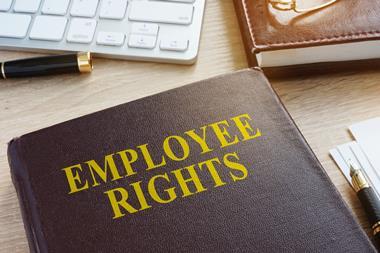Several high profile incidents involving possible reputational damage to multinational companies occurred recently, so how can companies guard against it? Caroline Jordan reports
Despite their supposed wealth of resources and in-house professionals, multinational corporations can fall short when it comes to managing their risks effectively.
Aon’s Global Risk Management Survey found in particular that more than half the respondents were not prepared for the risk they were most concerned about – namely damage to reputation.
Certainly there are a few notable examples where problems have occurred. Former BP chief executive Lord Browne was apparently once one of the world’s most admired businessmen. But he lied to the High Court about the circumstances in which he met lover Jeff Chevalier, leaving his company reeling. Meanwhile, the multinational has been swift to install a new chief executive and other key senior people and overhaul its safety and environmental policies.
Meanwhile, it is understood sales are still down compared to last year for Bernard Matthews products. The Norfolk turkey farming company has been hit by a succession of bad news stories including the demise of its Turkey Twizzler products, accusations of cruelty and the fact that 160,000 of its birds were destroyed because they may have been infected with the H5N1 virus.
And Cadbury’s image has been severely tarnished following the recall of one million chocolate bars after salmonella was found in its factory production line.
Its European president, Matthew Shattock, said the company was worried about the damage which the scare could cause to the firm’s ‘ ‘ reputation. He stated: “That’s something which we are very concerned about.”
The insurance industry is increasingly looking to provide cover so that financial and practical help is available to rebuild damaged brands and to give risk management guidance to prevent issues arising. In the case of stopping the spread of avian flu and head of companies using dating sites this may be a difficult one, but who can blame them for getting involved? Costs for such cover are likely to be beyond the reach of smaller firms, but are taking off within multinationals.
Alex Hindson, associate director in Aon’s enterprise risk management division, comments: “Reputation was cited the top concern for risk managers in the survey but insurance solutions, although they do exist are limited.”
He explains: “Reputation is something that is hard to establish and easily lost, as illustrated by a series of corporate scandals. Reputation is managed by having good processes in place to manage key business processes.” And, he says that managing reputations should not be the sole province of either risk managers or the public relations or affairs teams.
“It is a board level issue and only through establishing a policy on how risk is managed in the group can executives hope to influence and control behaviour across the organisation. This will ultimately lead to protecting and enhancing a company’s reputation.”
Hindson says that large organisations may have communication issues with different divisions working in silos. External consultants can help improve this and he adds: “Risk management techniques can be effectively applied to identified threats that could significantly impact corporate reputation. Conversely opportunities can be identified for enhancing or strengthening reputation.
“Adopting an enterprise-wide approach to risk provides a consistent framework within which an organisation can debate these issues and come to a consensus.”
There are a number of insurance products which can provide some protection to a company’s brand. Product recall is one and directors’and officers’ increasingly now incorporates some element of crisis management consultancy cover.
But, Lloyd’s insurance group Kiln probably provides the most specific insurance with its 4Front range which covers intellectual property, damage to reputation and continuity planning.
Its damage management product is described as a risk transfer solution and balance sheet protection for the expected revenue that could be lost following adverse media reports.
Underwriter Matthew Hogg says it is a type of business interruption cover and comments: “It is a worldwide product and aimed at all types of businesses, although the food and drink sectors, major retail brands such as those in fashion for example, or perhaps a charity might find it particularly appropriate.”
Cover is written on a bespoke basis and limits of indemnity are clearly agreed at the outset. “A fractured reputation can mean more than simply short-term financial damage and most companies will find the immediate aftermath of an event will provide severe cash shortages as revenues are instantly affected.”
He says the type of media reports which could trigger a claim are those where the policyholder’s product has caused or is likely to cause death or injury, where there has been a recall or where an individual operates in a way that is incompatible with the corporate image.
Hogg adds that many brokers are still too blinkered in their approach to insurance and recommending standardised products. “We don’t think anyone else is offering cover like this and there is little empirical data on this type of insurance but as a catastrophe product we believe it has huge potential.”
Andrew Cornish, head of major accounts for broker Lockton International, was formerly a risk manager for companies including Sainsbury’s and Colt Telecom, and his appointment is part of Lockton’s strategy to beef up its offering for large corporations.
“Brokers dealing with this sector do need to be specialist, whether it is in more complex products such as product recall or in areas where self insurance is an option.
“There is also far more being done in terms of business continuity planning and companies such as ourselves will be spending a lot more time with clients on this.”
While Marsh and Aon may dominate the multinational broking market, businesses such as Lockton and Willis are recruiting more experts in fields such as disaster recovery. Indeed in the Aon survey, respondents cited business interruption as the second key risk concern, followed by third party liability risk. It is widely believed that class actions are no longer likely to be restricted to the US.
Rick Welsh, unit head for Novae, comments: “In terms of liability, you are seeing more companies look at what D&O cover they have in place as an overarching insurance. Companies want to know about protection for issues such as a share price plunge, how to manage their reputations and subsequently attract and retain staff and jurisdictional creep from the US is a major concern now.”
He adds that wire fraud is set to become an increasingly common reason for litigation and again sufficiently high levels of D&O for major corporations are going to be necessary.
Other concerns stated within the Aon survey were distribution or supply chain failure, market environment, regulatory and legislative change, failure to attract staff and market risk. Interestingly, physical damage to property only comes in at number nine in the list and at No 10 is failure of the disaster recovery plan.
The intangible issue of reputation indirectly touches on many of the areas highlighted in the Aon survey as well as being placed first.
And, as Owen Gorman, director with specialist liability adjuster Sigma, concludes: “Many larger clients do want to know how they can offset liabilities.
“In the UK, the Cadbury’s recall made a big impression and would have led to more business looking at their limits of liability. This has also promoted the massive growth in disaster recovery planning services and both adjusters and brokers are increasingly looking to offer these.”
Hosted by comedian and actor Tom Allen, 34 Gold, 23 Silver and 22 Bronze awards were handed out across an amazing 34 categories recognising brilliance and innovation right across the breadth of UK general insurance.










































